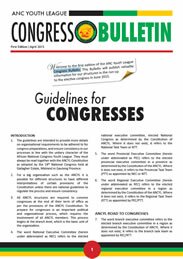HSAs vs FSAs: Eligibility, Carryovers, and What You Can Buy
When you’re deciding how to manage healthcare costs, the differences between Health Savings Accounts (HSAs) and Flexible Spending Accounts (FSAs) can shape your strategy. You’ll come across varying rules for who’s eligible, how your unused funds are treated, and what expenses you can actually cover. If you want to make the most of these options and avoid costly mistakes, it’s worth knowing how each account’s unique features work in your favor—or against you.
Eligibility Criteria for HSAs and FSAs
When evaluating Health Savings Accounts (HSAs) and Flexible Spending Accounts (FSAs), it is essential to comprehend the differences in eligibility requirements. To establish an HSA in the United States, individuals must be enrolled in a high-deductible health plan (HDHP).
In contrast, FSAs typically require participation in an employer's benefit plan, which does not necessarily have to be an HDHP.
Both HSAs and FSAs allow employees to allocate funds for eligible medical expenses, including dental and vision care. However, it is important to note that only specific types of FSAs may include provisions for dependent care expenses.
Additionally, FSAs are employer-sponsored and are generally forfeited if the employee leaves the job, whereas HSAs carry over unused funds from one year to the next, providing a long-term savings option for healthcare costs.
Ultimately, it is advisable to review your specific insurance plan for detailed information on the availability and features of HSAs and FSAs, as well as any associated eligibility criteria.
Contribution Limits and Growth Potential
Contribution limits and growth potential are key factors when evaluating Health Savings Accounts (HSAs) and Flexible Spending Accounts (FSAs) for managing medical expenses. As of 2026, individuals can contribute up to $4,400 to an HSA, while families may contribute up to $8,750. In contrast, the contribution limit for an FSA is set at $3,400.
One significant advantage of HSAs is the ability to carry over unused funds from year to year without a cap. This feature contrasts with FSAs, which typically mandate that funds be used by the end of the plan year, although some plans may allow for a limited carryover.
Additionally, HSAs provide investment options that can lead to tax-free growth of savings, a benefit not available with FSAs. It is important to note that to qualify for an HSA, individuals must be enrolled in a High Deductible Health Plan (HDHP).
In summary, HSAs and FSAs have distinct rules and limitations regarding contributions and fund management, and understanding these differences is essential for effectively saving for healthcare expenses.
Ownership and Portability of Funds
Ownership is a critical aspect of health savings accounts (HSAs) and has significant implications for their management and utility. When you establish an HSA, you retain full control over the funds, which remain yours regardless of changes in your insurance provider or employment status. This characteristic allows for the accumulation of funds over multiple years, making HSAs a viable option for addressing long-term medical expenses.
Moreover, HSAs can be utilized to cover a range of eligible costs, including dental and vision care, in addition to qualified medical expenses.
In contrast, flexible spending accounts (FSAs) are generally employer-owned, which creates certain limitations concerning access and portability. If an employee leaves their position, any unspent FSA funds are typically forfeited at the end of the plan year, barring exceptions set by the employer.
This distinction highlights the relative advantages of HSAs in terms of ownership and fund portability, as they provide individuals with greater flexibility in managing their health care costs over time. Understanding these differences is essential for making informed decisions regarding health savings options and potential benefits.
Rollover Rules and Fund Accessibility
Understanding the management of unused funds in Health Savings Accounts (HSAs) and Flexible Spending Accounts (FSAs) is essential for effective health care budgeting.
Health Savings Accounts permit the rollover of funds from year to year without any limit. This allows your balance to accumulate over time, which can be utilized for qualified medical, dental, and vision expenses. Importantly, HSA funds remain accessible even if there are changes in enrollment status.
In contrast, Flexible Spending Accounts generally operate under the "use-it-or-lose-it" principle, which requires that any unused funds be spent by the conclusion of the plan year. However, some FSA plans do allow for a rollover of up to $680 into the next plan year.
It is advisable to review your employer's specific benefit plans and seek solutions that align with the types of FSAs offered and the eligible expenses covered. This approach will help in optimizing the use of these accounts while adhering to defined regulations.
Tax Benefits and Account Advantages
A fundamental difference between Health Savings Accounts (HSAs) and Flexible Spending Accounts (FSAs) pertains to their tax implications and long-term accessibility. Contributions to an HSA are tax-deductible, and the funds can grow tax-free. Moreover, HSA holders can use their balances for qualified medical expenses without any time limitations, allowing for potential savings accumulation over time.
Conversely, FSAs are designed to decrease an employee's taxable income. Participants generally pay less in income and Medicare taxes by allocating funds to an FSA within a given plan year. However, a significant limitation of FSAs is that unspent funds typically expire at the end of the plan year, making them less conducive for long-term planning.
Both HSAs and FSAs are subject to annual contribution limits, which should be verified in individual benefit plans. Additionally, it is advisable to review the rules regarding eligible expenses and enrollment to fully understand the distinctions and benefits of each account type.
Eligible Medical Expenses for HSAs and FSAs
Health Savings Accounts (HSAs) and Flexible Spending Accounts (FSAs) are financial tools that permit individuals to utilize pre-tax dollars for various healthcare expenses. However, it is crucial to note that not all medical costs are eligible for reimbursement through these accounts. Common qualifying expenses include physician visits, prescription medications, dental and vision care, along with certain predefined medical costs.
An important distinction between HSAs and FSAs is their treatment of funds. HSAs permit individuals to roll over unused balances from one year to the next, which can be a strategic advantage for long-term savings. Conversely, FSAs typically have a "use it or lose it" policy, meaning that any remaining funds at the end of the plan year may be forfeited, though some plans may offer a short grace period for unused amounts.
Furthermore, it should be noted that eligibility for HSAs requires participation in a high-deductible health plan (HDHP), while FSAs are available regardless of the type of health insurance coverage an individual holds.
In addition to typical medical costs, FSAs can also provide for dependent care expenses, though HSAs do not cover these types of expenses.
It is advised that individuals review their specific plan documents to understand the associated limits, eligible expenses, and necessary documentation for claims. This prudent approach will ensure optimal usage of these financial resources for healthcare costs.
Ineligible Purchases and Common Restrictions
Health Savings Accounts (HSAs) and Flexible Spending Accounts (FSAs) provide tax benefits for qualified medical expenses. However, specific regulations govern the types of purchases that can be made with these accounts. Generally, expenses related to cosmetic surgery, standard gym memberships, and personal wellness classes are not considered eligible under most Benefit Plans.
Additionally, tuition costs for educational purposes, dental procedures that are not medically necessary, life insurance premiums, and standard insurance premium payments are also excluded from eligibility.
While over-the-counter medications may be purchased with HSA funds without a prescription, the policy surrounding FSAs can vary; therefore, it is advisable to review the particulars of your specific plan.
Furthermore, contributions, rollovers, and annual limits are determined according to US tax regulations, and it is important for account holders to remain informed about these provisions to ensure compliance. Understanding these restrictions helps individuals make informed decisions regarding their health spending.
Investment Options and Interest Accumulation
Health Savings Accounts (HSAs) and Flexible Spending Accounts (FSAs) are both financial tools designed to assist with healthcare expenses, yet they offer distinct features that can significantly impact their utility for account holders.
One of the key advantages of HSAs is their capacity to earn interest and facilitate investment of the account balance. After enrollment, individuals can select investment options such as mutual funds, allowing for potential growth of their savings over time. Importantly, funds in HSAs do not expire at the end of the plan year; they can be carried over indefinitely. This characteristic enables account holders to accumulate savings for eligible medical, dental, and vision expenses, as well as insurance premiums.
Conversely, FSAs operate under different regulations. Funds contributed to an FSA must typically be used within the plan year, with limited options for rollover into subsequent years, depending on the specific plan design. As such, FSAs generally do not allow for long-term accumulation of savings, which can restrict their effectiveness in planning for future healthcare costs.
In summary, the principal difference between HSAs and FSAs lies in the growth potential of the funds. HSAs support long-term savings growth through interest and investment opportunities, while FSAs present a more limited framework that requires timely expenditure of funds.
Understanding these distinctions can help individuals make more informed decisions regarding their healthcare savings strategies.
Using Both Accounts: Restrictions and Planning Considerations
When evaluating the potential benefits of utilizing both a Health Savings Account (HSA) and a Flexible Spending Account (FSA), it is essential to understand the regulatory constraints that govern their usage. Notably, individuals can maintain both accounts, but the combination of account types allowed can vary. Specifically, an HSA can be utilized alongside a limited-purpose FSA, which is designated for qualified dental or vision expenses. However, this is contingent upon the individual being enrolled in a high-deductible health plan (HDHP).
Conversely, enrolling in a general-purpose FSA typically disqualifies an individual from contributing to an HSA.
Additionally, it is crucial to be aware of the contribution limits and expiration policies for each account. Funds in a general FSA generally do not roll over beyond the end of the plan year, while HSA funds can be carried over indefinitely. This characteristic makes HSAs particularly appealing for individuals looking to save for future medical expenses.
Individuals should consult the documentation provided by their benefit plans to identify eligible expenses for both accounts. Furthermore, a comprehensive understanding of the respective tax implications and strategic planning could assist in maximizing savings on tax returns while managing eligible medical costs in accordance with U.S. regulations.
Conclusion
When choosing between an HSA and an FSA, it’s essential to match your account to your healthcare needs and employment situation. If you want long-term savings and the flexibility to keep funds year-over-year, an HSA is likely right for you. If you expect regular health expenses and prefer predetermined contributions, an FSA can help manage costs. Understanding eligibility, tax advantages, and spending rules will help you maximize your benefits and make the most of either account.

 Documents
Documents











